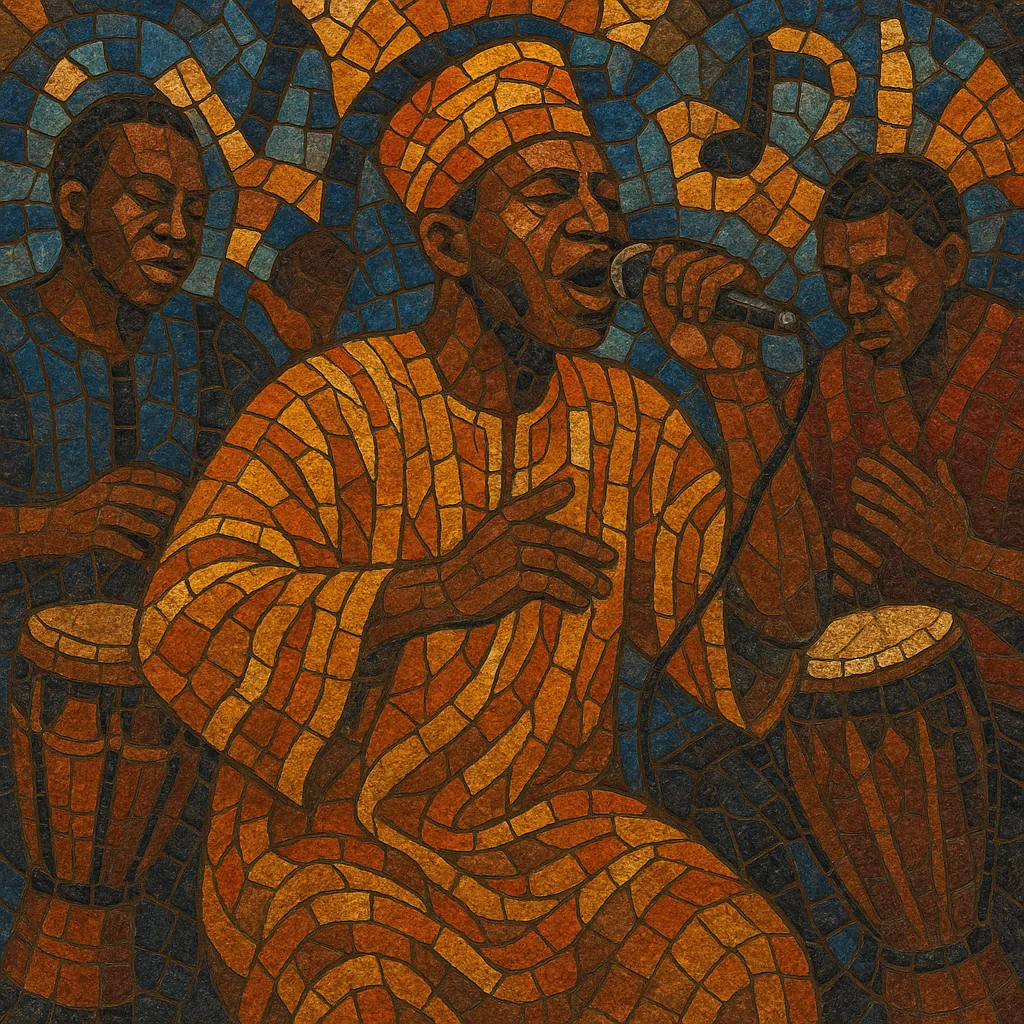Fuji is a percussion‑driven popular music from southwestern Nigeria that grew out of Muslim wake‑up (wèrè/ajisari) songs performed during Ramadan. It blends the call‑and‑response vocals and praise‑singing tradition of Yoruba culture with dense drum ensembles, hand percussion, and later, modern band instruments.
Characterized by rolling polyrhythms, insistent grooves, and melismatic lead vocals, fuji emphasizes rhythm and vocal interplay more than complex harmony. Since the 1980s it has absorbed elements of jùjú, highlife, and contemporary urban pop, producing both traditional street‑party variants and sleek, band‑backed concert styles.
Fuji emerged in Lagos and other Yoruba cities from wèrè/ajisari—the predawn Islamic devotional music used to wake the faithful during Ramadan. Performers adapted the vocal style, praise‑singing, and percussive frameworks of Yoruba traditions (notably apala and sakara) and began presenting them outside religious contexts. Early innovators, especially Alhaji Sikiru Ayinde Barrister, formalized the style, named it “fuji,” and expanded its repertoire.
During the late 1970s and 1980s, fuji became a dominant urban dance music. Barrister and his friendly rival General Kollington Ayinla drove rapid stylistic development—adding bigger drum sections (talking drums, sakara, omele, gudugudu), shekere, agogo, and later bass, guitar, and keyboards. Albums and marathon live sets popularized long, evolving medleys with social commentary and praise‑singing.
Artists like King Wasiu Ayinde Marshal (K1 De Ultimate) polished arrangements, introduced tighter band choreography, and reached international audiences. Adewale Ayuba’s smoother, pop‑aware approach expanded fuji’s appeal to younger and more cosmopolitan listeners, while the scene maintained strong grassroots street credibility.
Into the 2000s and 2010s, stars such as Pasuma, Saheed Osupa, Obesere, and Sule Alao Malaika fused fuji with highlife guitar licks, synth vamps, and, at times, hip‑hop/afrobeats production. Fuji cadences and praise‑chant hooks permeated Nigerian pop (often called afrobeats), while “gospel fuji” took the style into Christian contexts. Today, classic percussion‑heavy formats coexist with modern band setups and studio‑driven hybrids.


